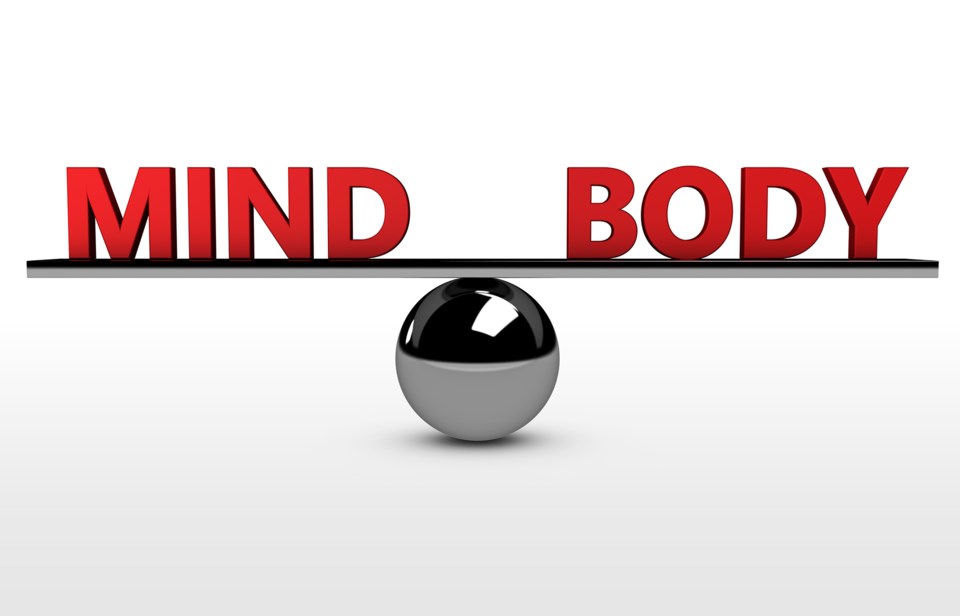This quote from a recent article in the Globe and Mail newspaper asks a profound yet simple question. The article goes on to give many examples of patients, after suffering from complex health problems for years, who have found relief through a controversial “new” therapy called Intensive Short Term Dynamic Psychotherapy.
Maybe you have had the experience of pain/suffering but the doctors can’t give you any real answers. Or you feel shuttled from specialist to specialist, test to test, yet no one can tell you exactly how to fix things. After all of this, one of the health team might suggest seeing a psychiatrist. Does this mean you are imagining your pain? Are you bringing these health problems on yourself?
Look back at the opening quote. Isn’t that a most logical possibility?
In this “new” therapy, the professional uses a relatively active questioning technique to help the patient recognize deeply held emotions and the connections with physical sensation that emerge. It almost seems miraculous that in as little as one session, someone who has suffered for years can find relief!
The problem is that this therapy is rare, and currently only offered in private settings, which can be unaffordable for many. It may also be too radical for some patients, who might benefit from a slower approach that allows the individual to have more control over the pace of change.
But this idea that emotions can create physical sensation is very old. And our own lived experience bears it out (please reread opening quote).
We know that patients who have a strong social support network heal faster from surgery. We know that stress levels are higher for people who feel isolated or judged. There are compelling studies on early childhood trauma and addiction. So why is it so hard to accept in our own minds that what we feel inside shows up on how we live our lives outside?
This doesn’t mean that we are weak mentally. Or overly emotional. It means we are human.
If you are experiencing pain, or a complex health problem, you can take action to accelerate your healing now. Searching out this new brand of psychotherapy might be a great option. But you can also recognize that if getting at the emotions is just too tough right now, you can “back channel."
If your emotions talk to your physical sensations, then your physical sensations can talk to your emotions. This is called somatics. This word comes from the Greek “soma,” meaning body. It means to use the body as a tool to heal the mind.
Seeking out a somatic therapist is also a great option. Feldenkrais Movement Therapy is one of the most well recognized programs.
You also have the option of starting along this path on your own right now. Movement will help you heal in almost all cases (the exception would be a traumatic injury in which stabilizing the joint is essential and that would only be for a short while, like having a cast).
One of the protocols that I have used extensively in my career as a yoga therapist, is the Joint Freeing Series. This simple set of accessible exercises lubricates and moves each joint through its free range of motion, and it’s done in a specific order. This version utilizes a chair so that means no pressure of the knees on the floor and safer movements for sore backs.
Here are some key points to remember in any somatic work:
-
Breathe. The bridge between the mind and body is the breath. Breath should be slow and easy through the nose, as even between exhale and inhale as you can manage. If you find yourself holding your breath or it is jagged, stop and relax and resume when your breath is calmer.
-
Go slow. We tend to think that if a little bit of something is good, a lot is better. Doing more repetitions or pushing more will make things worse in this case.
-
Be consistent. The brain learns best when there is routine and when there are small changes over time. Doing the exercises 10 minutes a day every day is better than 60 minutes once a week.
-
Bring your heart to the work. Although there are parts of your body that might be painful or uncooperative right now, there are many parts that are miraculous in their functioning. Please bring reverence and gratitude to your movements.
As always, please feel free to contact me if you have questions about the new therapies or the old ones. www.cherylgordonyt.com



